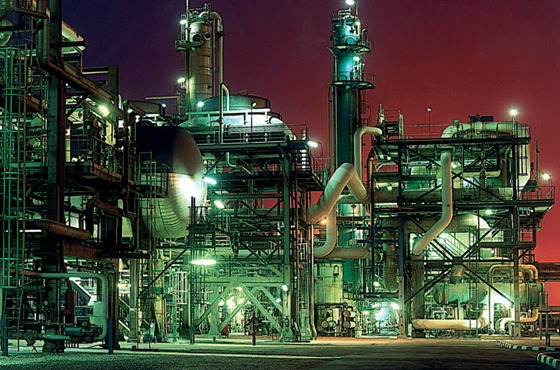Asia remains a key driver of growth for Qatar’s petrochemicals sector, with demand from the region fuelling investment and expansion projects. However, the long-term outlook is less certain after the cancellation of the $6bn Al Sejeel petrochemicals plant, one of the megaprojects targeted to come on line by the end of the decade.
Qatar, the world's largest liquefied natural gas producer, is diversifying its exports away from the oil and gas sector and is already the second largest exporter of chemicals in the Gulf, representing 17% of total Gulf Cooperation Council's (GCC) chemical exports, according to the Gulf Petrochemicals & Chemicals Association. Countries such as Qatar are using their supplies of energy to widen their industrial bases and boost exports of non-energy goods such as chemicals with petrochemicals and refining activity making up 40% of manufacturing output, according to the Ministry of Development Planning and Statistics.
Plans are afoot to invest $25bn in petrochemical capacity to produce 23m tons by 2020 − from 16.8m tons in 2012 −, according to state-owned energy distributor Muntajat, which holds the rights to market, sell and distribute Qatar's chemical and polymer products globally. As well as raising production capacity, investments are aimed at broadening the range of petrochemical products on offer.
However Industries Qatar (IQ), the state-controlled petrochemicals and steel producer, revealed in September that it was putting on hold the Al Sejeel plant, construction of which was due to start by early next year. The venture, between QAPCO and state energy company Qatar Petroleum, was one of two petrochemical plants scheduled to be constructed before the end of the decade.
IQ said it is studying “a new downstream petrochemical project that is expected to yield better economic returns”. According to MEED, the petrochemical complex was one of several high-profile projects to be signed this year, to make up contracts worth an estimated $40bn.
Expansion process
The petrochemicals industry has embarked on a long-term expansion plan based on the assumption that demand from China and other emerging markets such as India will continue to grow, according to a recent report by corporate consultants Dun & Bradstreet.
The second major expansion process is the $6.5bn Al Karaana plant, an 80:20 joint venture between state-owned Qatar Petroleum and Shell due to come on line in 2018. The facility will have a 2m ton production capacity, which will add 25% to Qatar’s petrochemicals output. Officials have said the bulk of this new production is likely to be directed toward the Asian market.
Offshore production is seen as another route for expansion. Qatar Petroleum International (QPI), a subsidiary of Qatar Petroleum, has struck a series of agreements over the past few years to develop petrochemicals production projects in Vietnam and Singapore, among others. These projects will see Qatar provide feedstock for other offshore developments and help the country expand its profile along the Asian supply chain.
Positive outlook
Khalid Al Subaey, chief coordinator for Mesaieed Petrochemical Holding Company (MPHC), a subsidiary of Qatar Petroleum, said prospects for petrochemicals producers are positive in the medium term, helped by rising demand and the slow pace of new capacity being brought on line in North America.
The rise in demand for high-density polyethylene, the most commonly-used plastic in packaging and bottles, has been consistently above global GDP growth for some time, a trend that is expected to continue, Al Subaey told OBG.
“The strongest demand growth is from Asia, and in particular, China,” he said. “While China’s high density polyethylene demand growth rate is expected to slow somewhat over the next five years, it is still expected to be above 6%. China’s continued growth coupled with relatively few new capacity additions is expected to drive increasing exports, especially from the Middle East.”
As part of the push into Asia, Muntajat announced in mid October the opening of offices in eight Asian hubs, along with an office in Morocco to serve the North African market. Two of the new Asian offices will be in China – located in the industrial centers of Guangzhou and Shanghai – and one in India’s Mumbai. The others will be in Thailand, Sri Lanka, Philippines, Indonesia, and Pakistan.
Oxford Business Group
23 November






















































